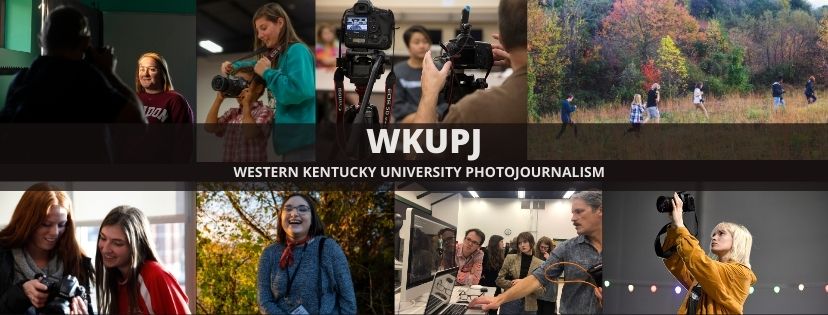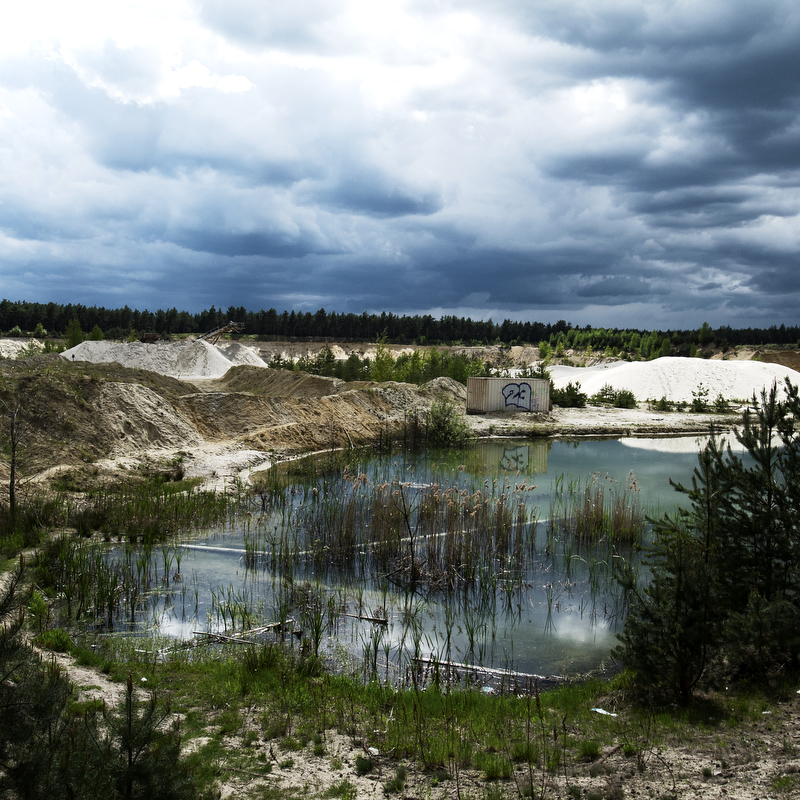This week, we present WKU senior Demetrius Freeman’s photo essay he created while studying abroad at the Danish School of Media and Journalism last spring as part of our ongoing series entitled Focus On, which highlights some of the extraordinary talent coming out of the photojournalism program at Western Kentucky University.
Train Ride to the End of the World: Hoyerswerda
During the time of the GDR, Hoyerswerda was a powerful, fast-growing industrial town in the Saxony state of eastern Germany. Glass factories, coal mining, and power plants provided thousands of jobs forcing the demand for housing to dramatically rise in a short period of time. Hoyerswerda was a model city of the east increasing the population from 24,549 in 1960, to 34,095 in 1963, to 53,472 in 1968. The peak was reached in 1981 when the population hit 72,000 people. Thousands of apartment complexes were built in order to meet the demand.
In 1990, with the end of the GDR and the reunification of Germany, the economy was reorganized causing thousands of jobs to disappear. Power plants reduced staff, factories closed, and buildings emptied as people moved west for better opportunities.
With the loss of these jobs, Hoyerswerda began shrinking at a rapid rate, as more and more people moved to bigger cities like Berlin and Dresden for better opportunities. The population average age rose as the students and young people left the city. Hoyerswerda was left with empty factories, businesses, streets, and thousands of empty apartments. The fear is not only of Hoyerswerda shrinking, but fear for the future existence of the city itself.
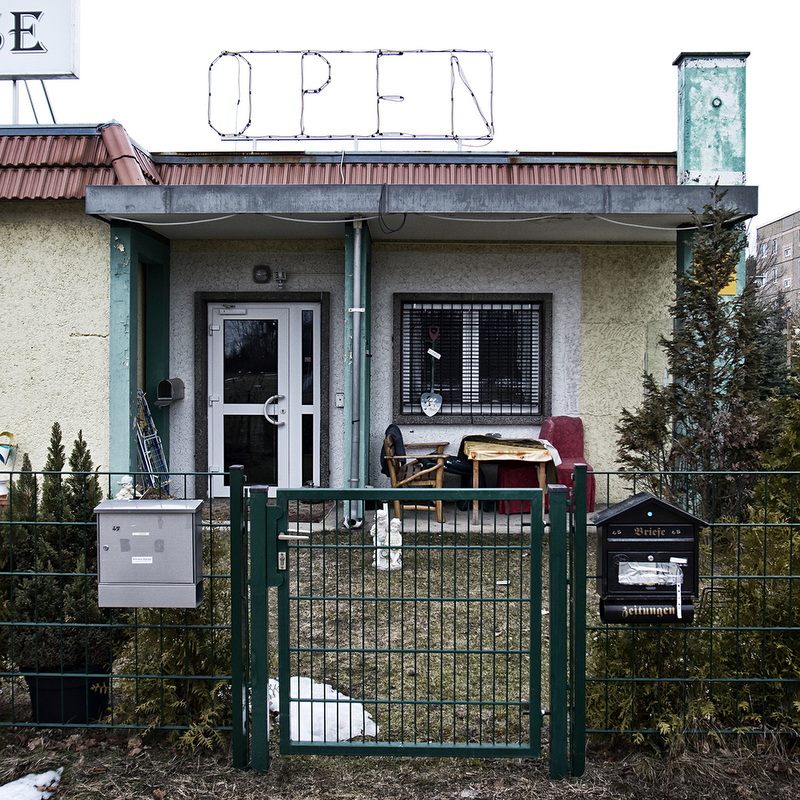 An old restaurant on the outskirts of town that has been transformed into a home. All the surrounding apartments have been demolished.
An old restaurant on the outskirts of town that has been transformed into a home. All the surrounding apartments have been demolished.
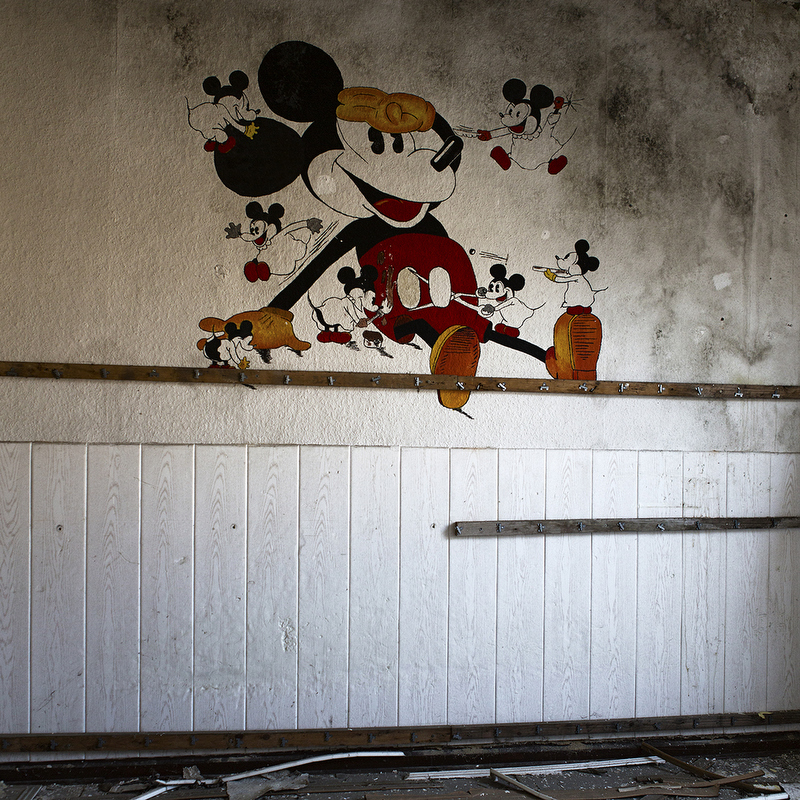 An old painting of Mickey Mouse inside of what used to be a family home. When the factory shut down the residences moved leaving the neighborhood abandoned.
An old painting of Mickey Mouse inside of what used to be a family home. When the factory shut down the residences moved leaving the neighborhood abandoned.
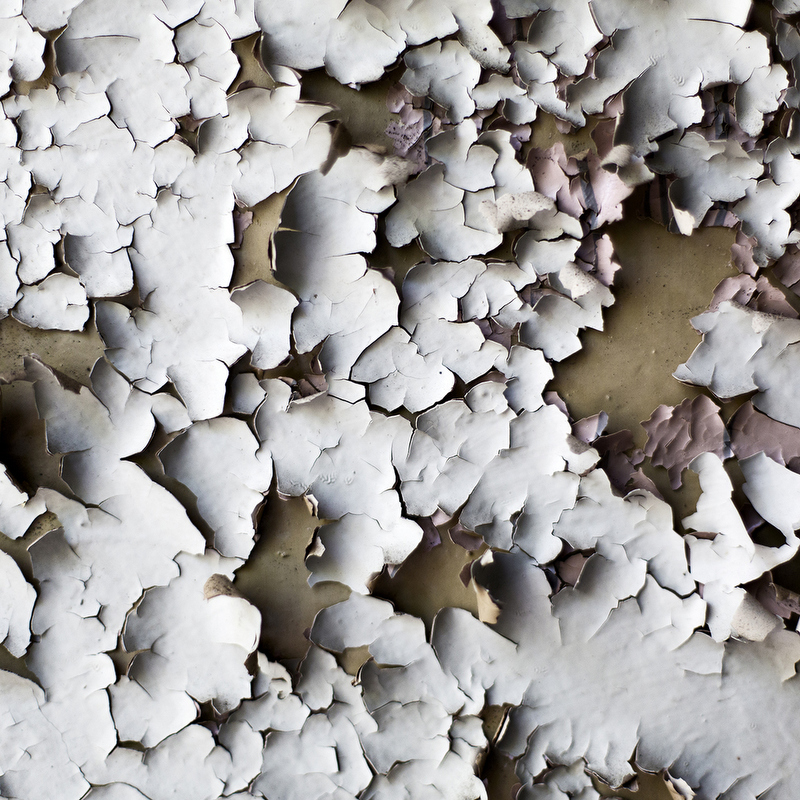 Paint peeling from the wall of an empty apartment complex. The apartment was filled with families and workers from the glass factory but when it closed everyone moved to other places leaving the small community empty.
Paint peeling from the wall of an empty apartment complex. The apartment was filled with families and workers from the glass factory but when it closed everyone moved to other places leaving the small community empty.
 The last building structure that stands on the outskirts of town. This building has on tenant and is scheduled to be demolished.
The last building structure that stands on the outskirts of town. This building has on tenant and is scheduled to be demolished.
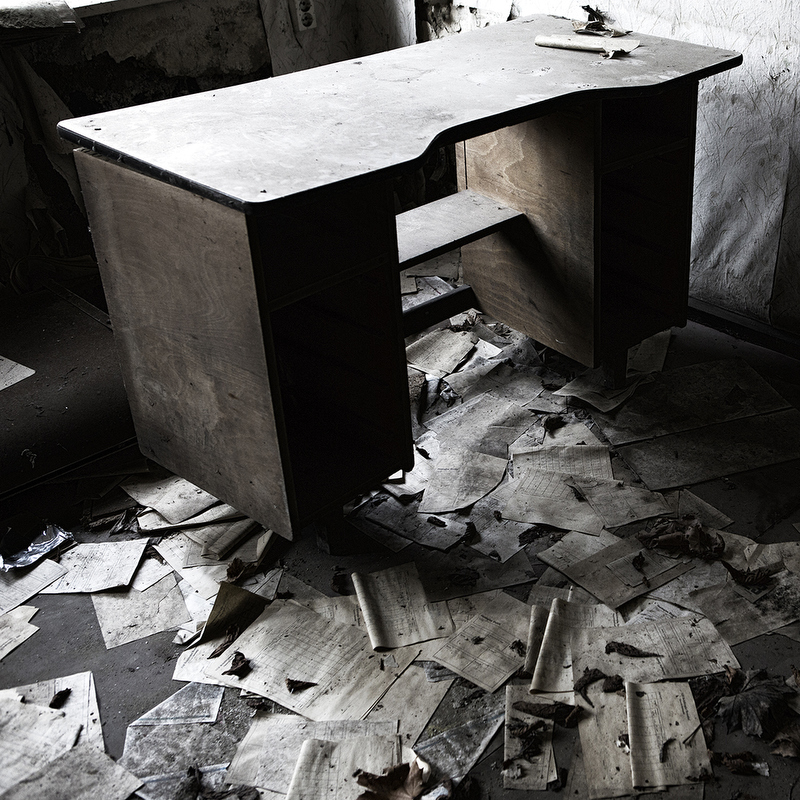 An empty desk inside of the old glass factory outside of Hoyerswerda.
An empty desk inside of the old glass factory outside of Hoyerswerda.
 Broken glass from an abandoned home across the street from the closed down glass factory. When the factory closed the neighborhood emptied as everyone migrated to Dresden and Berlin for better job opportunities.
Broken glass from an abandoned home across the street from the closed down glass factory. When the factory closed the neighborhood emptied as everyone migrated to Dresden and Berlin for better job opportunities.
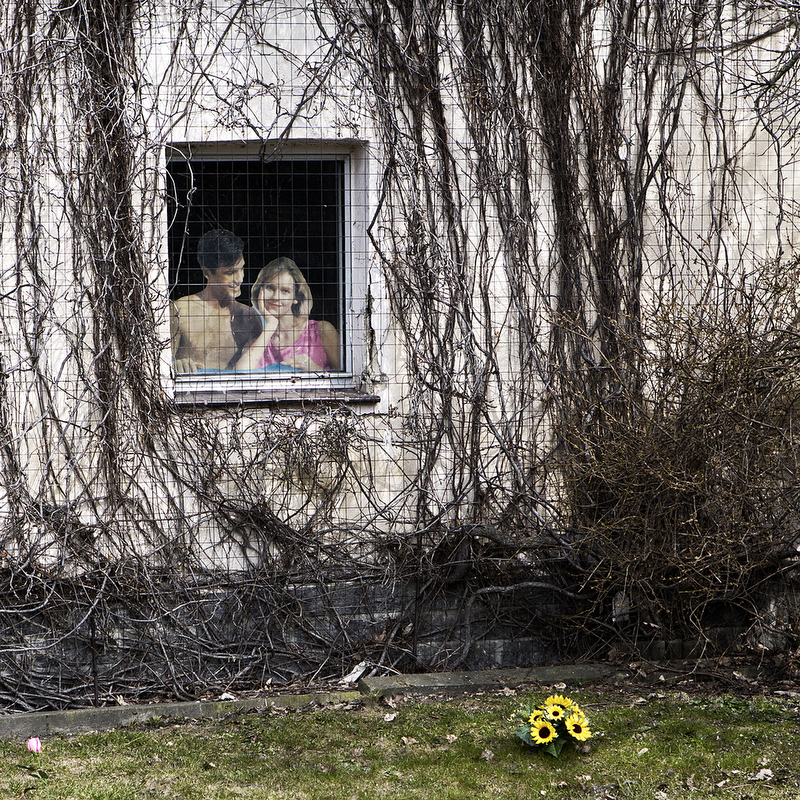 A paper cutout sits in the window of a home in a next to Hoyerswerda. The village is scheduled to be demolished so that the mining company, Vattenfall, can begin mining coal where the village stands.The company has built a duplicate town 6 miles from the original town.
A paper cutout sits in the window of a home in a next to Hoyerswerda. The village is scheduled to be demolished so that the mining company, Vattenfall, can begin mining coal where the village stands.The company has built a duplicate town 6 miles from the original town.
————
NPPA: What lead you to this story?
DF: Some years ago I read an article about Detroit, and it’s issues with job loss and a fast-shrinking population. Reading the article made me ask, is this issue happening in other places, if so why, and more importantly, could the survival of a city be based solely on the economic diversity of the city? Is this the beginning of a new society issue that will hurt smaller cities, towns, etc.? Will we all migrate to bigger cities? All of these thoughts crossed my mind and I began researching where this was happening in the world other than Detriot. If Detroit the extreme case, was it economic based? More questions meant more research. Then I came across a New York Times Article from 2009 about Hoyerswerda, Germany. The article explained the issue of shrinking populations, the aging community, and the lost of jobs, but visually I had no idea what these places were like. So I decided that once I returned to Europe I was going to do a photo story there.
NPPA: What story are you trying to tell with these images?
DF: The goal of these images is to provide a photographic landscape of Hoyerswerda and the feeling of isolation, destruction, and emptiness.
NPPA: What has been the most rewarding part of the story for you?
DF: Personally, working on this story has really made me open my eyes to other cultures, languages, and has made me more aware that there are issues that need a voice everywhere. This project made me fear what could happen, embrace what did happen, and sympathize with people with a level of understanding that was gained through listening and asking. Having the opportunity to focus on a single project for a longer period of time was such a joy to me. At first I was nervous because I have never worked on something for a long period of time, but as the story went on I felt that I connected on a deeper level than just the surface. The most rewarding would have to be the relationships I established. I met some awesome people in Hoy who showed interest in who I was and allowed me to explore their world and tell me part of their story.
NPPA: What was the most challenging part?
DF: This project made me step out of my comfort zone, which is an extremely challenging thing to do. I traveled to a place I had never been before, where most people do not speak English, where Neo Nazis have a strong presence, and where seeing a dark-skinned person is a very rare sight. While in Hoyerswerda I was confronted by a Neo Nazi advocate who spoke strong words about “Hail Hitler and Only Whites should be on the earth.” This was the first time I had ever had a direct verbal racism attack, which made me feel out of place for a moment but because I did my research and found a fixer, she was able to defuse the situation. This encounter was a reminder that racism still remained and that I must continue forward and not let such things harm who I am.
NPPA: What has been the most important thing you have learned?
DF: The experience I gained from working on Train Ride to the End of the World: Hoyerswerda has been very rewarding for me both professionally and personally. Professionally I have become an overall better journalist. Though I took photographs, the most important and time-consuming moments were during researching, planning, and interviewing. I learned how to look at and analyze the research material to find my angle. I learned how to plan for a trip, scheduling my time with several subjects within a day, and I learned the importance of having a fixer. This has given me confidence in traveling to places where the culture and the language is different. I also learned how to communicate better during interviews, allowing the subject to speak freely gave more details and important information that also makes them feel a part of the project and thus gives it a better result.
Photographically, I have gained the confidences and trust in my skills, the ability to tell a story in a different form than linear, and a stronger ability to show meaning in a photograph that is normally done with text. I learned how to adjust my visual style to fit with the dominating material and how to collaborate and be more open minded about photo selection.
This project taught me more about myself and helped me learn and overcome new challenges while creating lasting memories and relationships. Experiences is what I live for so I encourage others to take that chance, buy that ticket and go explore. Thanks! -DF
